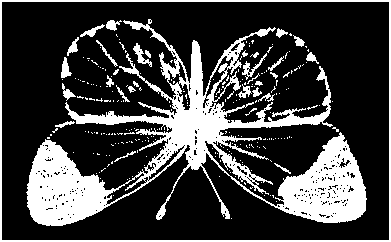
A Fly for the
Prosecution
How Insect Evidence
Helps Solve Crimes
<M. Lee Goff
(Harvard)
>
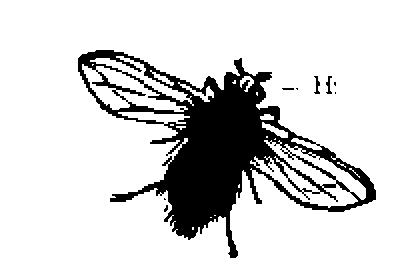
M. Lee Goff is a forensic entomologist. This means that he studies flies, maggots, beetles, bugs, worms, and other creepy-crawly creatures in order to find out the hour of death of humans murdered and dumped in a field, or by the side of the road, or down a gully.The moment someone dies --- says Goff --- within ten minutes some of these bugs start to appear on the scene, creatures that you and I wouldn't (or wouldn't want to) be caught dead with --- gooshy things like screw-worms, histers, rove beetles, red legged ham beetles, cheese skippers (hold the cheddar!), black soldier flies, and my favorite, blow flies.
What happens is that when a body is dumped at the edge of, say, a pineapple field (Goff practices his trade where he lives, in Hawaii), these animalitos know instinctively that it's lunch time, where they can come for a porky feast --- chomping down on the flesh in one of the five stages of decay. So, if you're a blowfly, you turn up promptly in response to the aroma of fresh meat so you can have a few nibbles and then leave behind some of your children to finish off the job. However, there ain't no such thing as a free lunch: soon enough, other flies and wasps put in an appearance, sometimes to munch on the munchers. According to Goff, within three weeks --- assuming the dining area is someplace where the weather is pleasant and the waiters aren't too obstreperous --- all that will be left is skin and bone.
All this eat-and-be-eaten isn't random. These creatures put in appearance in a certain order: those who like feasting on blood will be different than those who are into jerky, for example. And they and their progeny leave specific traces, which, if you know your bugs and the ambient temperature --- will make it relatively simple to establish exactly when the body was let off. Which, in turn, is of major importance to detectives working on the case: it tells them who may be innocent, who will have a viable alibi, and who may be guilty.Given the grim work, you'd suspect that this Goff would be a grim guy. Nonsense. This is one of the merriest books I have picked up in weeks:
We had lunch together at the Willows Restaurant near the University of Hawaii at Manoa. By the end of the meal we had decided that if we could discuss maggots and decomposing bodies while eating curry over rice, we could probably work together.
Or, when he was at a conference at the FBI academy at Quantico, shortly after his presentation was over:
Since it was late June, warm outside, and there was a parking lot with powerful lights, Wayne [a special agent and fellow-expert] and I began to behave like entomologists. We went out into the parking lot and started collecting the insects attracted to the lights. Only ten minutes later security guards appeared and asked what we were doing; after a lengthy discussion they decided we were harmless and let us continue. The next evening, we were joined by a couple of others, and by the third night we were a pack, combing the parking lot for dazed insects that had flown into the lights. Even the security guards began to get interested.
Goff hastens to assure us that it is serious business in the end:
I am keenly aware that I may have to face someone whose life can be radically changed --- even ended --- by my testimony. I do not take this responsibility lightly...When someone's life is at stake, all the enthusiasm in the world is a poor substitute for accuracy.
Our author has some insightful if dry comments about law, and lawyers, and judges, and other expert entomologists. As he guides us through the somewhat complicated world of larvae and beetle, spiracles and puparium, he makes us see the enormously complex factors that he has to juggle in order to compute, within hours, the moment of death. Some times he bogs us down with "The most mature Phormia regina maggots on the body are molding from the first instar into the second instar. The ADH required are the total ADH required for the maggots to complete the egg state and all of the first instar. For laboratory rearings at 26.7ºC, that time would be 34 hours..." But balance this against such insights as,
Most people do not share my enthusiasm for maggots, and I have to present the subject very carefully to avoid repelling the jurors --- and others in the courtroom...At this point in the trial, the jury and I both get a break while the judge and attorneys argue over the repulsion factors of the various exhibits.
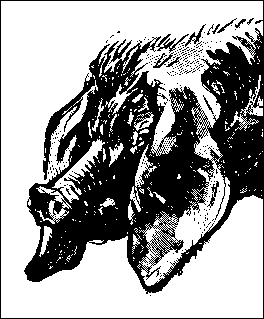 Then there are the wonderful descriptions of the piggies he uses for testing: since fifty-pound pigs seem to attract many of the same icky creatures that feed on human carcasses, Goff will often, a few days before giving a seminar, dump five dead pigs in various near-by areas, in various guises, to demonstrate to his students the bluebottle maggots, hister beetles, et al. During his course at Quantico, when he visited the week-old pigs just before class,
Then there are the wonderful descriptions of the piggies he uses for testing: since fifty-pound pigs seem to attract many of the same icky creatures that feed on human carcasses, Goff will often, a few days before giving a seminar, dump five dead pigs in various near-by areas, in various guises, to demonstrate to his students the bluebottle maggots, hister beetles, et al. During his course at Quantico, when he visited the week-old pigs just before class,
I was amazed to see how well they had dressed for the occasion. Each pig had on a pair of glasses with a plastic nose, neckties were in place, and one was wearing a bib. Of course, no one in the class would admit having been anywhere near the pigs, but there were three female agents who seemed suspiciously enthusiastic about posing with the well-dressed pigs.
Amphibians
The World of Frogs, Toads,
Salamanders and Newts
<Richard Hofrichter, Editor
(Firefly Books)
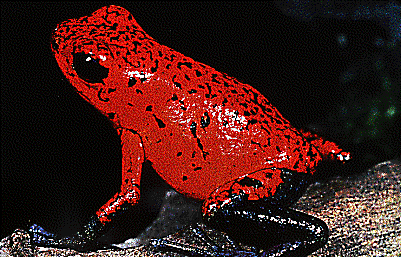
Some of these that come in the mail are so gorgeous that we don't do anything but fondle them, thanking the gods that he or she or they made it possible for us to be in the book review business rather than, say, putting us into optology, sociology, morphology, monogamy, or peptology.
Such a treasure is Amphibians, a 264 page wonder with full color presentations of every conceivable four-legged slithery jumpy thing: frogs, toads, newts. It all brings to mind that merry recipe, the organic stew concocted by the Three Weird Sisters (in the Year of the Big Wind),
Round about the cauldron go;
In the poison'd entrails throw.
Toad, that under cold stone
Days and nights hast thirty-one
Swelter'd venom sleeping got...
Eye of newt, and toe of frog,
Wool of bat, and tongue of dog,
Adder's fork, and blind-worm's sting,
Lizard's leg, and howlet's wing,
For a charm of powerful trouble...
And it ends with one of the most distinctive of cook-school ingredients --- one that for some reason never made an appearance in the recipes of James Beard or Julia Child: Finger of birth-strangled babe
Ditch-deliver'd by a drab,
Make the gruel thick and slab.
§ § §Amphibians is divided into five parts, with chapters from such experts as Doris Gutser, Ulrich Sinsch, Alois Lametschwandtner, Rudolf Malkmus, and Josef Schmuck and I didn't make up a one of these names: perhaps those who study the googly things of life have to start out with certain handicaps. Their essays appear under five main headings:
- Evolution, Systematics, and Biogeography;
- Biology and Physiology;
- Ecology and Ethology;
- The Meaning of Amphibians for Mankind;
- Amphibians: Endangerment and Species Protection.
Now we are never ones to fault the cool scientific perspective, with whole pages devoted to "Pædomorphosis" or "Thermoregulation" or "The Ecology of Cæcilians," but we have to assert that the true worth of this volume, what one might assert to be (once again, to quote from the master),
The Jewel in the Forehead of the Toad, aren't the words, the maps, the evolutionary charts, the graphs, the complete list of species diversity and distribution --- but rather, the skin shots, some two hundred colorful photographs that are almost good enough to eat, if you are into eating toads and frogs. (Some people are: one of the more intriguing charts lists fifty-one species that are on the menus of the cafés in Indonesia, Malaysia, the Philippines, Africa, New Guinea, and Europe and America. We find, for example, that one hundred fifty-one tonnes of frogs were imported into Switzerland in 1995. Can you picture 151 tonnes of those slithering, jumping creatures, crying "rivet, rivet" as they get fried up?)
Our favorite pics are the colorful redhead [above], the red-eyed tree frog [below], the tomato frog [you have to see it to believe it], and the Anura green frog ["When this frog's hind legs are grabbed, it opens its mouth and issues a sound similar to fighting tomcats."]
The fire salamander can live up to fifty years in captivity. The ground-dwelling white-lipped frog of Puerto Rico uses "seismic communication" to communicate with its would-be lovers. The flectonotus goeldii female carries a disgusting looking batch of eggs around on her back. And the R. rufum male will grab up fertile eggs, which hatch in his mouth. How's that for familial devotion?
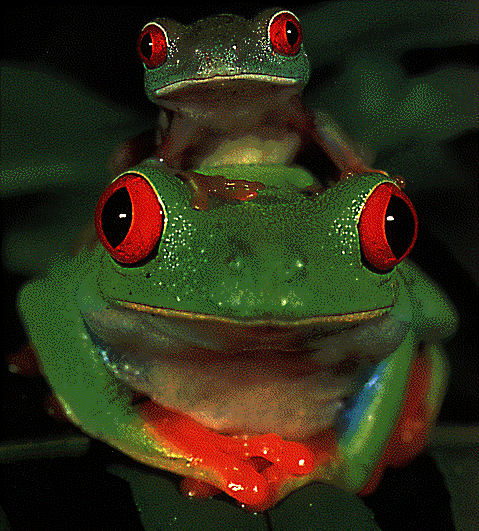
Good-Bye My Friend
Pet Cemeteries, Memorials,
And Other Ways to Remember,
A Collection of Thoughts,
Feelings, and Resources
<Michele Lanci-Altomare
(BowTie)

All the neighborhood kids had dogs, cats, or rabbits. Me? I had ducks. Stop laughing. What other pet, on hot summer days would go swimming all day down at the lake with you?My ducks were white Pekins, and since they looked exactly alike, and since they marched around the yard in single file, quacking, my sisters dubbed them "Pete" and "Repeat." Turned out they were female but --- no matter --- they were still "Pete" and "Repeat" to the one who loved them. After a year or so, they started, each day, to offer up their ultimate sacrifice, one or two of their babies for me to scramble, with bacon and toast, for breakfast.
They met me at the gate each afternoon, when I came home from school, followed me to the doorstep. At six in the evening I fed them and shut them up in their duck house for the night. We always got up early each morning to investigate the new wet fine green world, tracking through the grass, quacking (I had a good strong quack, too.) When I took the leaky rowboat out in the lake, they would swim along beside me, making circles, making contented duck muttering noises.
We also, alas, had a Chesapeake Bay Retriever. You know about hunting dogs and birds. One day, in the spring, when I was late coming home from school, Rover decided to make sport with Pete and Repeat. The two got panicked, ran too fast, tried to get away from him. Rover had to jump them to hold them down, and a little blood was spilled, and then more, and when I finally arrived, the oak and ficus were filled with white feathers. Pete had been torn limb-from-limb, Repeat was savagely wounded, fated soon enough to die.
I was inconsolable, curled up in my bed, telling my family to leave me alone. I was wishing I had never been late: my school-friends and I were playing stick-ball; I didn't want to leave; I should have left, I should never have been late.
Now I hated my school-mates, wished the dog were dead, wished my two white and cheerful friends were back with me again, through the fields again. I fell asleep and dreamed of snow falling on their little house. If there had been a pet cemetery in my small town, I would have insisted that Mom buy me a plot, erect twin headstones, the sad names carved boldly in marble.
§ § §Who would ever guess that there are so many Pet Cemeteries? Lanci-Altomare lists 125 of them in the United States, with names like "Harthaven," "Pet's Rest," "Trail's End," "Pet Haven," "Garden of Love," and, gulp, "Final Paws" and "Paws in Heaven." New York and Pennsylvania lead the list with twelve, Florida has ten. There are also several crematoria. There is help for the grieving on the internet, and twelve colleges --- including Cornell University and the University of California at Davis --- have "Pet Loss Support Hot Lines."
The Craig Road Pet Cemetery in Las Vegas is pictured with a memorial to a dog named Duke:
Burying a beloved pet can be nearly as emotional as burying a human family member. No one knew this more than Duke, who sensed the proper decorum as he attended funerals and greeted visiting families. If the family wanted to relieve the stress with play, Duke was there to fetch stones for as long as they would throw them. If they wanted quiet, he understood. If they needed a furry head to pet, his was always there.
He died in his sleep on March 30, 1999, and his tombstone says, "Guarding Heaven's Gates, DUKE, Our Faithful Caretaker."
In some cemeteries, people leave behind a stick --- "a fetch stick," to let their pet know " they were there to visit." "The Peaceable Kingdom" in Hartsdale, New York, is the final resting place for nearly 70,000 pets, and one headstone shows J. Edna Hoover: The Greatest Little Girl to Walk this Earth on Two of Four Legs.
The cat once known as Tisha Roberts at the San Diego Pet Memorial Park proclaims, I Am Too a People --- and at the cemetery in Las Vegas, a rabbit named Charles Clayton has his picture graved in stone, next to the words, You'll Be the Thump in My Heart 4 - Ever. It's signed, Luv, Jennifer.
The Truth
About Dogs
An Inquiry into the Ancestry,
Social Conventions, Mental habits,
And Moral Fiber of Canis Familiaris
<Stephen Budiansky
(Viking)
There are 55,000,000 or so dogs in the United States. We spend around $5,000,000,000 a year to feed them. Five billion dollars is roughly ten times what we spend on annual food shipments to the starving children in Africa, India, and South America. Our annual vet bills for dogs reaches $7,000,000,000 which is roughly thirteen times what we spend on annual food shipments to the starving children in Africa, India, and South America.Dogs bite a million people a year in this country, at an annual cost to us (medical, insurance, lawsuits) of a billion dollars, which is roughly twice what we spend on annual food shipments to the starving children in Africa, India, and South America. And our dogs aren't biting that guy sneaking in the bedroom to steal the family jewels: dog bites are like shooting people. Most bites (and bullets) are "friendly" --- e.g, they are aimed at someone nearby, a member of the pet-owning family, say; the mailman; the guy from next door jogging down the street; a neighbor's kid.
One of the great problems in Mexico City is dried dogshit, mixing with the dust of the streets, the smog of cars --- forming a toxic, lung-damaging pollution. Humans can be infected by sixty-five different diseases through dog feces, urine, or saliva. American dogs have an annual crap production of two million tons. Budiansky says,
Two million tons is a difficult figure to comprehend. By way of comparison, the United States each year produces 3 million tons of aluminum and 4 million tons of cotton.
Then,
The 4 billion gallons of dog urine generated each year in the United States...could fill all the wine bottles from a full year's output of the vineyards of France, Italy, Spain, and the United States combined.
Dogs probably took up with humans some 15,000 years ago. The author's most startling statements have to do with the nature of that relationship, telling us things that might appall dog-lovers. (This is not a Oprah style chatty book; the notes at the back of the book take up fourteen pages).
Budiansky doesn't call the relations between dogs and humans mutual love, protection, or a medicine for mutual loneliness. The word he uses is "parasitical,"
Parasites can never launch a direct assault, as most all organisms have active defenses to fend them off. Parasites instead are evolutionarily guileful, and the most successful ones are Trojan horses that play on the foibles or features of their host. We humans are possessed with a surprisingly suspicious and calculating mind that is always plotting stratagems and imagining the stratagems of others..[but] it is hard to deny that we feel a very fundamental, innate, unlearned, and in that sense quite irrational attraction toward cute little things, especially helpless cute little things. Dogs take advantage of this no end. They play us like accordions.
Almost every myth that you and I have heard over the years Budiansky explodes.
- House-breaking dogs? When you come home and find poop on the rug, it is useless to beat Rover. Anything that happens seconds after the event doesn't register, he doesn't make the connection. All he will learn to do is to fear your return.
- Dog's barking to wake up their owner, save him or her from the burning house? Most dogs bark at anything, and it just so happens that some bark at burning houses. They also can bark at, as we well know, their owners coming home, their owners leaving home, the neighbors coming home, the neighbors leaving home, any passing car, you sneezing, me laughing, the wind, the moon, the stars.
- When your dog hears the siren and howls, it's not because it hurts his ears: he just thinks it's another member of the pack, and he is going along with it to affirm membership. (Dogs closest relatives are wolves, and many of their actions are vestigial. Wolves howl --- always shortly after waking up, and the howling has been proved to reinforce the "cohesion of the pack" according to Erik Zimenin, who wrote about the declining wolf population (caused in great part by Canis familiaris.)
- Dogs protective of their pups? When a puppy is separated from its littermates, it makes a distress cry. The mother will go over, pick up the puppy by the scruff, bring it back to the nest. Loving parent, right? But if you record the puppy's cry, set the tape-machine around the corner, and play the tape back, the mother dog will go over, pick up the tape recorder, and carry it back to the nest.
§ § § Most of our blindness to the machinations of this noisy, ingratiating, and often dangerous parasite have to do with projection. How can we not be influenced by a creature that appeals so to our protective instinct? Those eyes. The head placed lovingly on your knee. Lying down next to us. Rolling over. Peeing on your foot.
Most of our blindness to the machinations of this noisy, ingratiating, and often dangerous parasite have to do with projection. How can we not be influenced by a creature that appeals so to our protective instinct? Those eyes. The head placed lovingly on your knee. Lying down next to us. Rolling over. Peeing on your foot.
When I was travelling last year --- a five day car journey --- my companion insisted, against my vehement protest, on bringing along a German Shepherd puppy, just six weeks old. The first day, I ignored the puppy, and my companion. The second day, I told my friend that the puppy would probably be more comfortable, up at the front of the car, with us --- rather back in the drafty camper shell. The third day, the dog had found a comfortable nitch next to me, would rest its head on my wrist, look up at me with pure adoration. I was loath to move, afraid of waking it, of breaking our rapport. The fourth day, I would have fought a major war against anyone who wanted to hurt my baby, and I told my friend that the puppy belonged to both of us. The fifth day, when the puppy died (we never found out why; the veterinarian said it was probably the drastic change of climate) I mourned my lost friend ridiculously. To this day, I remember that head on my arm, those eyes looking up into my own, the tiny shadow his body made when we finally laid him in the ground; my own tears.
My
Best
Friend's
Ghost
Douglas Cruickshank
For some time now I've been at that tedious stage of life where I wake up at, say, 3:19 a.m. and toss and turn and stare into the darkness, then settle into 30 or 40 minutes of concentrated fretting about some bit of minutia --- a minor disagreement, a financial hiccup, a newly discovered bump --- that, as I lie there, grows into a humongous angstbeast. Sooner or later (usually later) I go back to sleep and invariably, by morning, the previous night's Godzilla of worry has shrunk to the proportions of a strident titmouse.
Of course I like a good middle-of-the-night mental torment session as much as the next person, but I was nevertheless relieved when my evening disruptions changed in a way that was both strange and pleasant. I began to experience a phenomenon that I can't explain; it falls somewhere between wishful thinking and spirituality, the natural and the supernatural. Whatever it is, I'm in no hurry for it to cease.
Here's what's happened: I live in a small town, in an old neighborhood on a quiet street. During the past few months, a couple of times a week, I emerge from my nighttime slumber, but before the anxiety engine builds up a head of steam, I hear, clearly and distinctly, breathing --- right there in the room with me. And as I come fully awake and listen I recognize it as the slow, measured inhale and exhale of my giant dog, a 200-pound shaggy, black, extremely amiable Newfoundland, who doesn't sleep so much as go into a coma. Sometimes he'll shift and paw the carpet, snag his nail and shake it loose, but he never really comes to consciousness. In and out he breathes with soothing metronome regularity. His utter calm is contagious, and in no more than a few minutes, I drift back to sleep. On several occasions, I've heard him out in the living room or in the kitchen --- he tends to migrate between the same three or four spots through the night, never entirely waking up as he moves --- walking slowly and heavily to a new resting place, maybe turning a few times, then letting himself fall to the floor with a soft thud. I've always found it comforting to hear this great, laid-back creature that resembles a miniature buffalo moving about at night. And I still do.

The odd part is he died nearly five months ago.
I've never believed in ghosts, but thanks to this new series of very welcome nocturnal visitations, I'm now all in favor of them. When I told one woman this story, she said, "Ah, he's still in the house then." That seemed as likely an explanation as anything I've come up with. And when I asked a friend about her view of ghosts, she thought for a minute, then said, "I guess they're sort of our vapor trails." Indeed.
Over the summer and early fall, as the weeks turned to months and my ghost dog repeatedly made his presence known, I conducted a casual, unscientific poll. The poll's sole question was, "Do you believe in ghosts?" And the answers were surprising. These were levelheaded people from across the vocational and social spectrum, and their responses were about 85 percent "yes" to 15 percent "no." Not only that, a goodly number of the believers told me of their own experiences with ghosts.
The very notion of such a thing is a tenacious one. From culture to culture, across the centuries, the idea of a spirit that lingers after death, an apparition, a specter that continues to interact in some way with its earthbound friends, relatives and enemies has been pervasive. From ancient tales and on through the narratives of Dickens and Sebold, the thought that we can, and even should, stay in contact with the departed is a compelling one.
But do they exist or do we create them? Is there a spirit world, an in- between place? Are ghosts the rail we grab hold of to steady ourselves in tumultuous times? And if there are such entities, do we find them or do they find us?
I don't know. I don't have any idea. I do know that what I once dismissed, I've now had first-hand experience with. I know, too, that we're all so terribly concerned with what's real and what's not, with whether something happened or didn't happen, that we've lost all sight of the difference between what's probable and what matters. I suppose that's a ghost's reason for being --- to remind us. Maybe believing in them isn't even the point. Perhaps the more relevant question is whether they believe in us.
Be that as it may, this paranormal turn of events has set me to wondering. Is this the birth of a trend? Given how gaga people are about their mutts these days, can a population explosion of ghost dogs be far off? And if author Susan Orlean's dog can write a cookbook, perhaps my phantom friend is ready to be the first canine to dictate a memoir from the other side (Hollywood, are you listening?). Alas, I suppose not. He never displayed a proclivity for drafting prose before he passed over to the twilight world. And now, by all indications, his oversize spirit is still mainly interested in pursuing his greatest passion: sleep.
This essay first appeared in the
San Francisco Chronicle Sunday Magazine
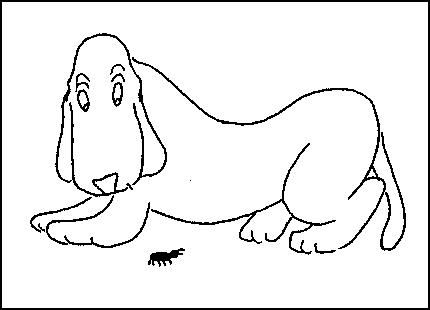

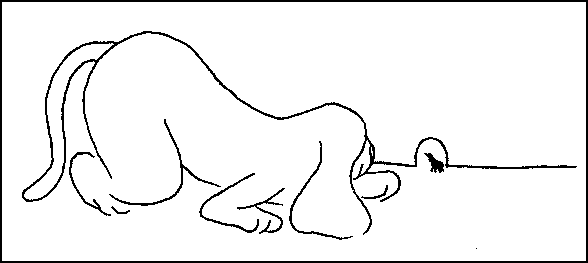

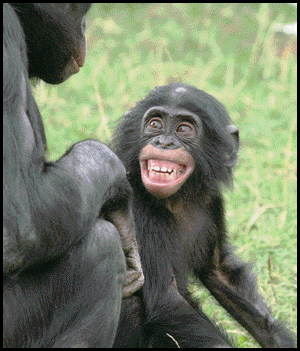
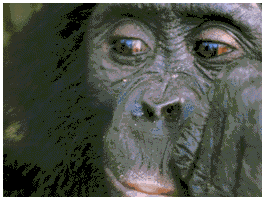
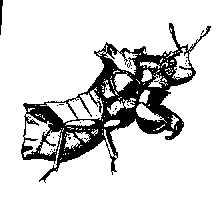
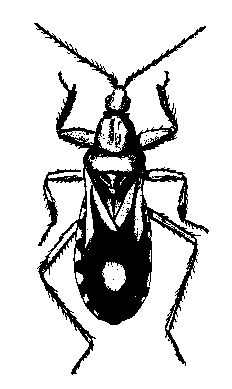 Beetles, Monarch butterflies, Tent caterpillars, locusts, Mayflies, cicadas --- they, like the AARP and fundamentalists, find extraordinary strength in numbers, and Waldbauer tells all. Take your locusts. When they get hungry and decide to join the International Locust Union, they form swarms, according to one observer, that can be 300 miles long and 100 miles wide. Imagine getting 10,000 of those buggers caught in your windshield wipers.
Beetles, Monarch butterflies, Tent caterpillars, locusts, Mayflies, cicadas --- they, like the AARP and fundamentalists, find extraordinary strength in numbers, and Waldbauer tells all. Take your locusts. When they get hungry and decide to join the International Locust Union, they form swarms, according to one observer, that can be 300 miles long and 100 miles wide. Imagine getting 10,000 of those buggers caught in your windshield wipers.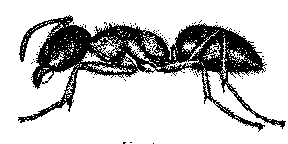
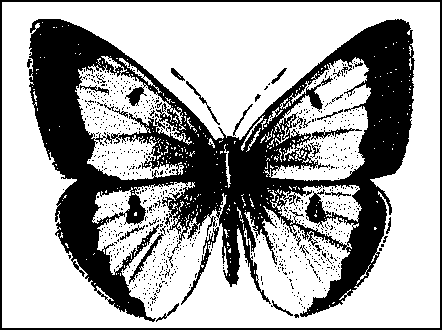
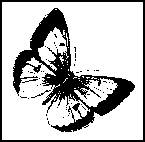 Most of all, there is the necessary splaying of purpose: if this is strictly Vladimir Nabokov and butterflies, why are all these other doo-dads stuck in here? For instance, we have on page 510 - 511 an excerpt from Lolita. It is a richly poignant and --- for the purposes of the novel --- crucial moment: after killing Clare Quilty, Humbert Humbert has just surrendered to the police, and while awaiting them, has a moment of reflection. It shows Nabokov at his scrupulously non-sentimental best:
Most of all, there is the necessary splaying of purpose: if this is strictly Vladimir Nabokov and butterflies, why are all these other doo-dads stuck in here? For instance, we have on page 510 - 511 an excerpt from Lolita. It is a richly poignant and --- for the purposes of the novel --- crucial moment: after killing Clare Quilty, Humbert Humbert has just surrendered to the police, and while awaiting them, has a moment of reflection. It shows Nabokov at his scrupulously non-sentimental best: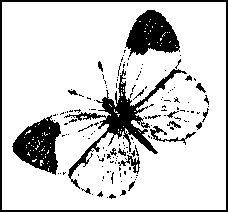 One could make out the geometry of the streets between blocks of red and gray roofs, and green puffs of trees, and a serpentine stream, and the rich, ore-like glitter of the city dump, and beyond the town, roads crisscrossing the crazy quilt of dark and pale fields, and behind it all, great timbered mountains. But even brighter than those quietly rejoicing colors --- for there are colors and shades that seem to enjoy themselves in good company --- both brighter and dreamier to the ear than they were to the eye, was that vapory vibration of accumulated sounds that never ceased for a moment, as it rose to the lip of granite where I stood wiping my foul mouth. And soon I realized that all these sounds were of one nature, that no other sounds but these came from the streets of the transparent town, with the women at home and the men away. Reader! What I heard was but the melody of children at play, nothing but that, and so limpid was the air that within this vapor of blended voices, majestic and minute, remote and magically near, frank and divinely enigmatic --- one could hear now and then, as if released, an almost articulate spurt of vivid laughter, or the crack of a bat, or the clatter of a toy wagon, but it was all really too far for the eye to distinguish any movement in the lightly etched streets. I stood listening to that musical vibration from my lofty slope, to those flashes of separate cries with a kind of demure murmur for background, and then I knew that the hopelessly poignant thing was not Lolita's absence from my side, but the absence of her voice from that concord.
One could make out the geometry of the streets between blocks of red and gray roofs, and green puffs of trees, and a serpentine stream, and the rich, ore-like glitter of the city dump, and beyond the town, roads crisscrossing the crazy quilt of dark and pale fields, and behind it all, great timbered mountains. But even brighter than those quietly rejoicing colors --- for there are colors and shades that seem to enjoy themselves in good company --- both brighter and dreamier to the ear than they were to the eye, was that vapory vibration of accumulated sounds that never ceased for a moment, as it rose to the lip of granite where I stood wiping my foul mouth. And soon I realized that all these sounds were of one nature, that no other sounds but these came from the streets of the transparent town, with the women at home and the men away. Reader! What I heard was but the melody of children at play, nothing but that, and so limpid was the air that within this vapor of blended voices, majestic and minute, remote and magically near, frank and divinely enigmatic --- one could hear now and then, as if released, an almost articulate spurt of vivid laughter, or the crack of a bat, or the clatter of a toy wagon, but it was all really too far for the eye to distinguish any movement in the lightly etched streets. I stood listening to that musical vibration from my lofty slope, to those flashes of separate cries with a kind of demure murmur for background, and then I knew that the hopelessly poignant thing was not Lolita's absence from my side, but the absence of her voice from that concord.
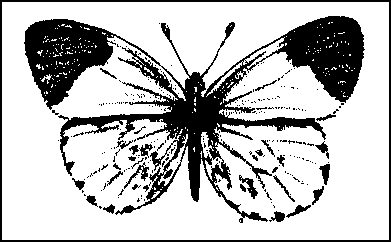 It is, needless to say, a glorious piece of writing, Nabokov at the top of his form --- the intensely vivid description of a place and a time, vision and sound intertwined with aching despair, complete with a sly symbolism (Humbert and his love in the clouds), a hint of the temptation of suicide, and the interwoven moment of knowledge of our hero which turns the book from a strange demented caper into a tragedy . . . for it tell us not only what Humbert Humbert had lost when he lost Lolita, but what she had lost in having been forced to spend those years with him.
It is, needless to say, a glorious piece of writing, Nabokov at the top of his form --- the intensely vivid description of a place and a time, vision and sound intertwined with aching despair, complete with a sly symbolism (Humbert and his love in the clouds), a hint of the temptation of suicide, and the interwoven moment of knowledge of our hero which turns the book from a strange demented caper into a tragedy . . . for it tell us not only what Humbert Humbert had lost when he lost Lolita, but what she had lost in having been forced to spend those years with him.

 Then there are the wonderful descriptions of the piggies he uses for testing: since fifty-pound pigs seem to attract many of the same icky creatures that feed on human carcasses, Goff will often, a few days before giving a seminar, dump five dead pigs in various near-by areas, in various guises, to demonstrate to his students the bluebottle maggots, hister beetles, et al. During his course at Quantico, when he visited the week-old pigs just before class,
Then there are the wonderful descriptions of the piggies he uses for testing: since fifty-pound pigs seem to attract many of the same icky creatures that feed on human carcasses, Goff will often, a few days before giving a seminar, dump five dead pigs in various near-by areas, in various guises, to demonstrate to his students the bluebottle maggots, hister beetles, et al. During his course at Quantico, when he visited the week-old pigs just before class, 


